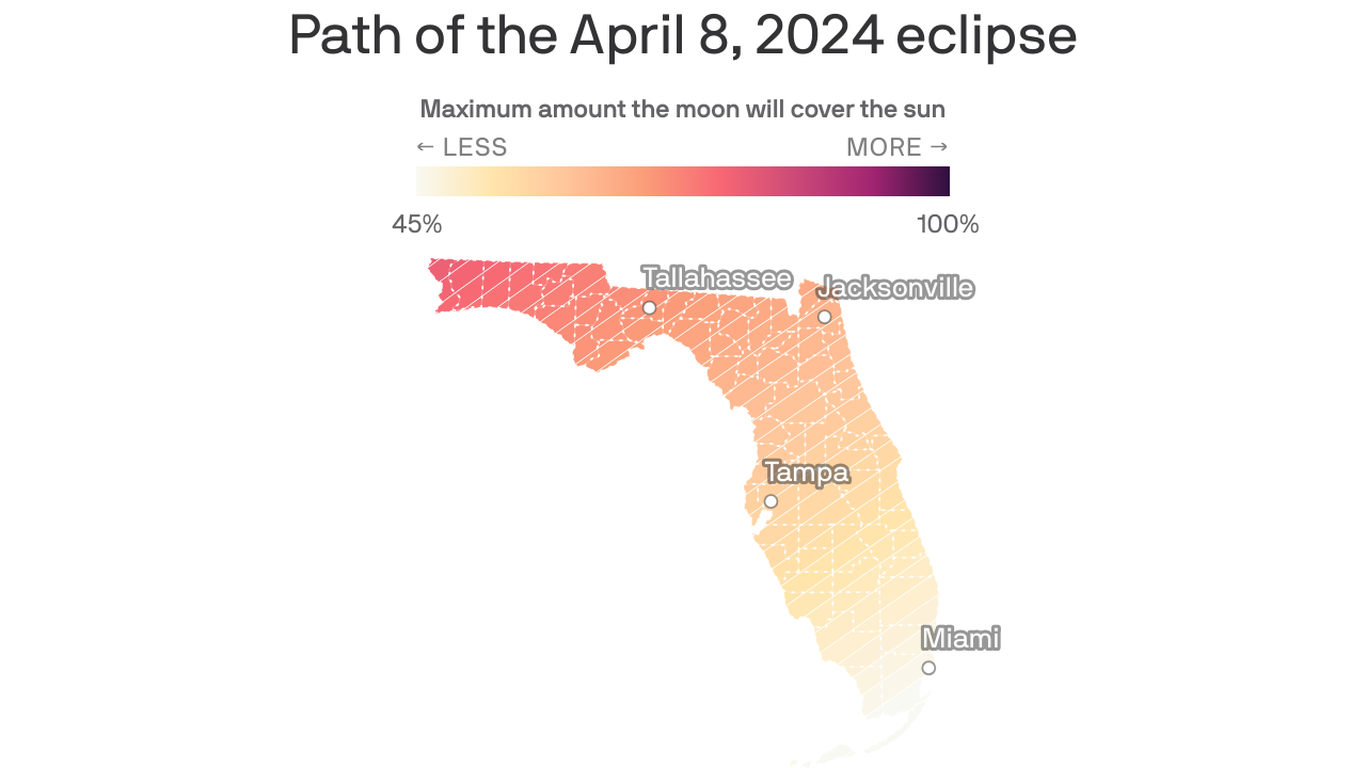How and when to watch the solar eclipse in Tampa Bay
North America won't see another total eclipse for two decades. The rareest total solar eclipse in North America will occur in Tampa Bay, occurring in the U.S. since 1869, with only 16 total solar eclipses in the United States since then. Despite the partial eclipse being a partial one, it is still worth a glance. Tampa's Museum of Science and Industry is hosting a solar eclipse event at its Amphitheater, with tickets costing as low as $14 with solar eclipse glasses, and St. Petersburg College's planetarium is open for free eclipse viewing at its planetarium and Clearwater Beach for an eclipse beach party. There will also be a live sand sculpting demonstration on the beach.

Published : a month ago by Yacob Reyes in Science
There's no way around it. Tampa Bay is an ideal spot to watch a suite of events, from sports to concerts — but the eclipse isn't one of them. Why it matters: North America won't see another total eclipse for two decades. Even though Tampa Bay will only catch a partial one, it's still worth a glance — behind solar glasses, of course.
Zoom in: Monday's forecast is sunny, with a high near 86. Skies may get cloudy near the start of the eclipse, which should be around 1:42pm.
• The eclipse peaks at 3pm and ends at about 4:15pm.
Here are a few places you can watch the eclipse in Tampa Bay:
• Tampa's Museum of Science and Industry is hosting a solar eclipse event at its Primary Colors Amphitheater. Tickets, as low as $14, come with a pair of solar eclipse glasses.
• St. Petersburg College is opening its planetarium to the public for a free eclipse viewing, with "specially equipped telescopes" available in the quad.
• There's also an eclipse beach party at Clearwater Beach. The first 2,500 attendees will receive glasses. You can also catch a live sand sculpting demonstration commemorating the eclipse.
The intrigue: Total solar eclipses are rare. There have been just 16 in the U.S. since 1869.
